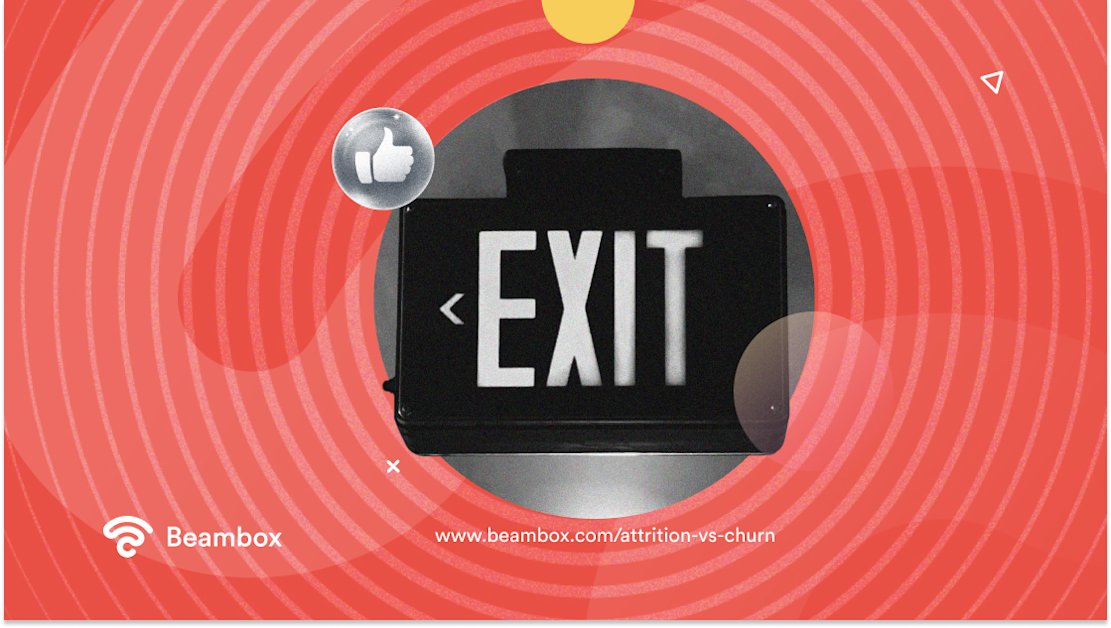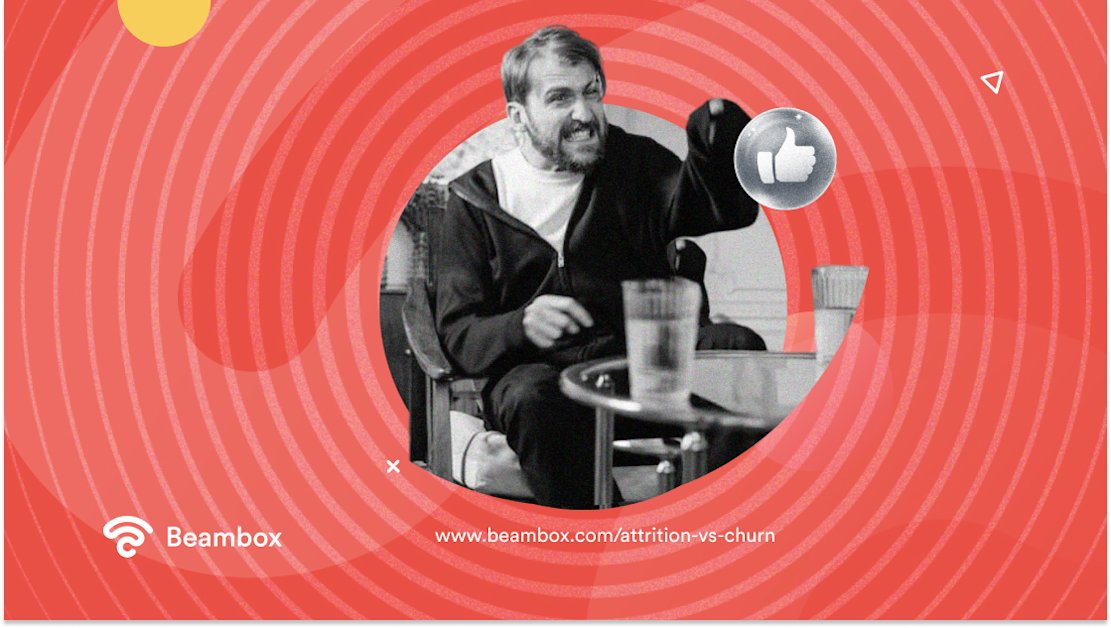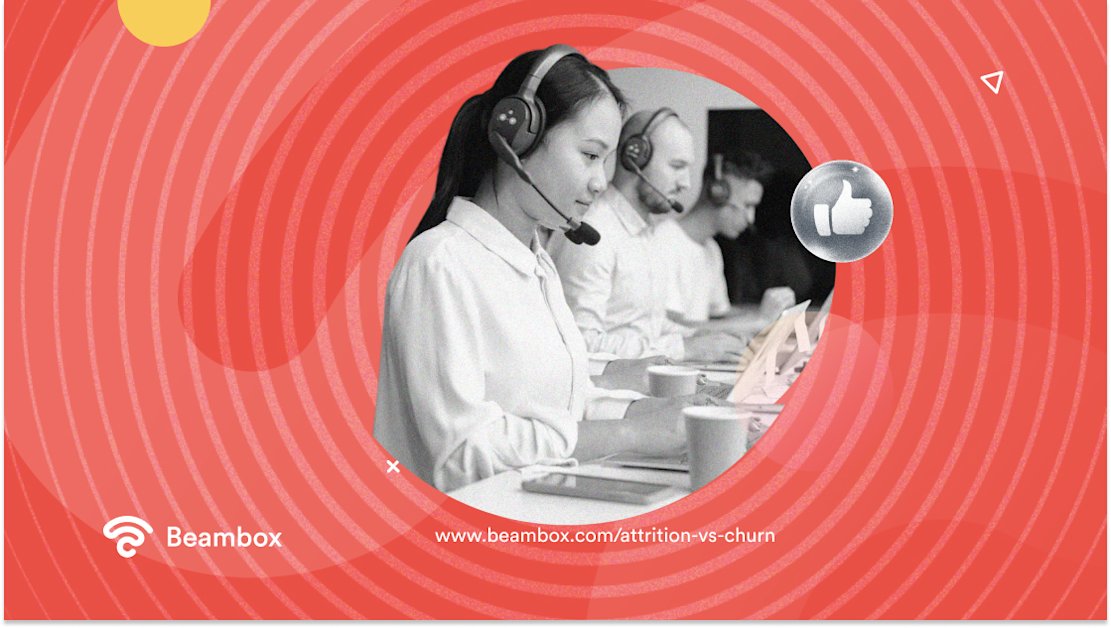Attrition vs Churn: Why These Metrics Matter for Businesses?
Since people and their needs change, you’ll find yourself losing customers and employees even if you’re doing everything right. However, you should always keep tracking things and see if you can improve them. That’s why attrition vs churn matters.
Both these metrics tell you how well you’re performing in terms of business and internal affairs. Thanks to this information, you can better retain customers and employees.
The focus word here is “better” since you can’t completely avoid churn and attrition. But there are certain steps you can take to reduce it once you understand the difference between them. So, let’s begin.

Learn the Subtle Differences Between Attrition and Churn
Customer churn is the rate at which customers stop doing business with a company. Here, they’re actively making decisions to stop buying from you for various reasons, including bad customer service.
Similarly, employee churn is the percentage of employees who leave their jobs at a company.
Again, negative experience, low pay, etc., might be the reasons here. Some churn is voluntary, meaning employees are the ones deciding to leave.
This type of churn indicates problems within your business that the employees find unsatisfactory. The other type of churn is involuntary, where you let the employees go. Here, the problem might be with your hiring process since you don’t like the employee’s work or they’re causing problems.
The time during which you calculate churn is up to you. You can do it monthly, quarterly, or yearly. But if you’re looking for the best period of time, it’s every four months.
Meanwhile, customer attrition is the number of customers who stop doing business with you due to more natural reasons. Death and moving to another place are the most common causes of this.
The same goes for employee attrition. These are the employees that leave your company due to relocation, retirement, or death. These reasons are voluntary, and there’s little you can do in these situations since you’re not at fault here.
Overall, high customer and employee churn rates mean you’re not fulfilling expectations. However, an acceptable churn rate depends on your industry. On the other hand, a high attrition rate simply means many of your customers and employees are relocating.

Is There a Difference Between Calculating Attrition vs Churn?
Now that you know the subtle differences of attrition vs churn, you’re ready to learn how to calculate them.
First, remember that attrition is a part of churn. So, when you calculate churn, you must also account for the employees and customers who leave for natural reasons.
Assuming you’re calculating the customer churn rate over a month, here’s what you need to do. Divide the number of customers left after the month by the total customers you had at the beginning. Then multiply this number by 100.
The formula to calculate customer attrition is the same as churn. But if you know how many customers left due to natural reasons, you can make this calculation more accurate.
Now, let’s talk about the employee side of things. Taking the same assumption of a month, here’s how to calculate the employee churn rate.
Divide the number of employees at the end of the month by the total number of employees at the beginning. Then again, multiply this number by 100.
When it comes to employee attrition, the formula will remain the same as churn. The only difference is that it involves averages instead of totals.
While some churn is inevitable, it shouldn’t be more than 10% for employees and 5 to 7% yearly for customers. If it goes beyond these numbers, it might signal an issue in your workplace culture.
With that said, the way to reduce your employee turnover rate is basic. Firstly, employees thinking you’re taking more work from them than you’re paying is a common cause of churn. So, provide a benefits package they can’t refuse.
Secondly, improve your hiring process to attract the right talent. Moreover, listen to their concerns and reward them for achievements—lastly, learn programs for them so they become better instead of leaving.
Customer Attrition vs Churn: 4 Tips To Reduce It
Did you know that a small improvement in customer retention can boost your profit massively? Therefore, taking steps to keep bringing customers back after the first interaction is a necessity.
Since you can’t force people to do business with you, this task might seem daunting. But if you’re focusing on keeping your customers happy, you have nothing to worry about.
So, keeping customer attrition vs churn aside for a while, let’s see what steps you must take for repeat business.

Never Stop Listening to Customers
As mentioned earlier, customers leave when you don’t fulfill their needs. They start looking for alternatives that may not necessarily be cheaper but meet their expectations.
Now, how would you know what customers need and expect from you? You can have the answer to this question by listening to their suggestions and feedback. The psychology of loyalty is simple here. If you listen and act on the feedback you receive, things will get better. Therefore, when customers leave reviews, treat them as learning opportunities.
Use them to improve your products and services. People need and like change. Therefore, add new features and upgrades that align with your customers’ needs.
Moreover, try to find patterns in things that your customers don’t like. This way, you’ll be able to make changes that bring improvements.
But to make this happen, you’ll have to let your customers know that you accept suggestions. You can either keep a physical suggestion box or give them details to contact you.
Keep in mind that you’ll sometimes get suggestions for lowering prices or launching discounts. You must act upon these as well.
Launch loyalty programs for customers to keep them coming back for more. Keep tiered programs where the more they spend, the more discounts they get.
Don’t Neglect Customer Segmentation
Customer segmentation might seem out of context here, but it actually plays a vital role in retention. Think about it: why do successful platforms like Spotify and YouTube offer personalized playlists? Because when you get suggestions on what you already like, you’ll spend more time on these platforms.
This is true for all businesses. When customers get suggestions according to their preferences, they’re more likely to make purchases.
Therefore, you must segment your customers not just according to demographics but also according to preferences. Behavioral segmentation works wonders in most industries. The hard part might be customer data collection, especially if you don’t rely on technology.
Once you have these groups sorted out, send them personalized messages promoting your products and services. But don’t be aggressive here since you’re trying to retain customers, not scare them away.
Subtle reminders will keep your customers engaged. Even if they’re about to leave, a personalized nudge might reel them back in.
Additionally, ask them if they liked the suggestion. This will help you understand their preferences even better.

Make It Simple To Become Your Customer
If you want to retain customers, your onboarding process must be as simple as possible, especially in SaaS.
That is the first interaction they will have with your business. If your first impression isn’t good, you can guess how the rest of the collaboration will go. Don’t ask customers to fill out lengthy forms and pay you multiple visits just to buy from you.
In case you own a business where legal complications are common, just keep one contract that they sign.
Let’s make an example to understand this tip better. Suppose you own an online retail business. You’ve made a website and are active on social media platforms.
Now, if you don’t let customers know whether you’re accepting orders through your website or DMs, it’ll confuse them. They will have to text you and ask, which will only prolong the onboarding process.
So, give clear instructions on how to order on both your website as well as social media platforms.
Provide the Best Customer Support
The last tip is perhaps the heart and soul of holding onto your customers. If you don’t provide good customer support, you can’t expect them to keep doing business with you.
Just like a simple onboarding process, make it easy for them to contact you when they’re facing a problem.
And when they do contact you, treat them politely. Listen to their concerns and provide them with solutions. Moreover, don’t hesitate to apologize if it really is your fault. When a customer is angry, a simple apology can go a long way.
Plus, you can give incentives to help make the situation better. But whatever you do, never stray away from keeping your customers happy.

Don’t Let Your Churn Rate Discourage You
By now, you must have a good understanding of attrition vs churn, so you’ll feel comfortable while calculating these metrics. However, don’t let the numbers discourage you if you find them to be on the heavier side of the scale.
If you want to scale your marketing activities and results, try out Beambox. This WiFi marketing platform helps you learn about your customers and automate your campaigns. Beambox does not require additional hardware and has no hidden fees. Start your trial today!
Get Started With Free WiFi Marketing
Beambox helps businesses like yours grow with data capture, marketing automation and reputation management.
Sign up for 30 days free


